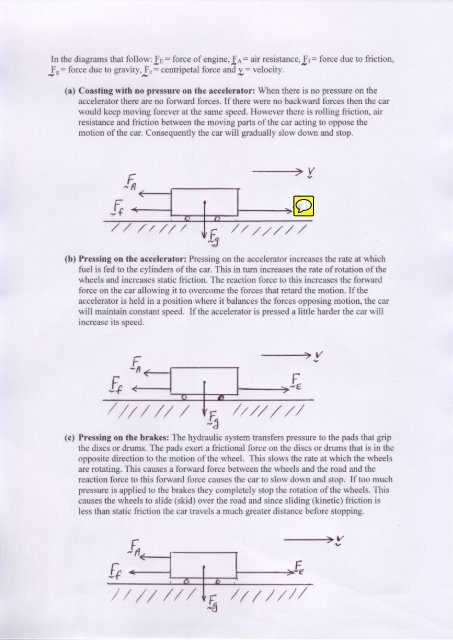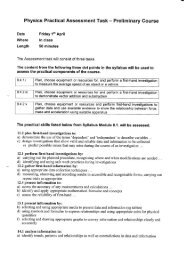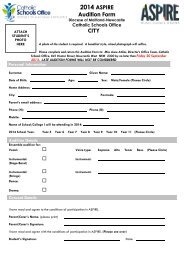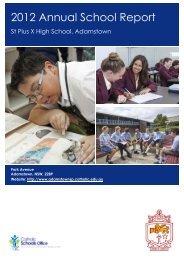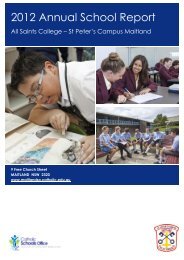Solutions to Force - Worksheet 1
Solutions to Force - Worksheet 1
Solutions to Force - Worksheet 1
Create successful ePaper yourself
Turn your PDF publications into a flip-book with our unique Google optimized e-Paper software.
Inthe diagrams that follow:.Ep: force of engine,fe: air resistance,Jr: force due <strong>to</strong> friction,<br />
jr : force due <strong>to</strong> gravityJ. : centripetal force and y - velocity.<br />
(a) Coasting with no pressure on the accelera<strong>to</strong>r: When there is no pressure on the<br />
accelera<strong>to</strong>r there are no forward forces. If there were no backward forces then the car<br />
would keep moving forever at the same speed. However there is rolling friction, air<br />
resistance and friction between the moving parts of the car acting <strong>to</strong> oppose the<br />
motion of the car. Consequently the car will gradually slow down and s<strong>to</strong>p.<br />
v V<br />
/ 1r // / F /r //// /<br />
*J<br />
(b) Pressing on the accelera<strong>to</strong>r: Pressing on the accelera<strong>to</strong>r increases the rate at which<br />
fuel is fed <strong>to</strong> the cylinders of the car. This in turn increases the rate of rotation of the<br />
wheels and increases static friction. The reaction force <strong>to</strong> this increases the forward<br />
force on the car allowing it <strong>to</strong> overcome the forces that retard the motion. If the<br />
accelera<strong>to</strong>r is held in a position where it balances the forces opposing motion, the car<br />
will maintain constant speed. If the accelera<strong>to</strong>r is pressed a little harder the car will<br />
increase its speed.<br />
V<br />
v<br />
//r/ /1 /<br />
1r// / tt<br />
(c) Pressing on the brakes: The hydraulic system transfers pressure <strong>to</strong> the pads that grip<br />
the discs or drums. The pads exert a frictional force on the discs or drums that is in the<br />
opposite direction <strong>to</strong> the motion of the wheel. This slows the rate at which the wheels<br />
are rotating. This causes a forward force between the wheels and the road and the<br />
reaction force <strong>to</strong> this forward force causes the car <strong>to</strong> slow down and s<strong>to</strong>p. If <strong>to</strong>o much<br />
pressure is applied <strong>to</strong> the brakes they completely s<strong>to</strong>p the rotation of the wheels. This<br />
causes the wheels <strong>to</strong> slide (skid) over the road and since sliding (kinetic) friction is<br />
less than static friction the car travels a much greater distance before s<strong>to</strong>pping.<br />
--v -+<br />
/ /<br />
// // /<br />
n /r / / ///<br />
-d


